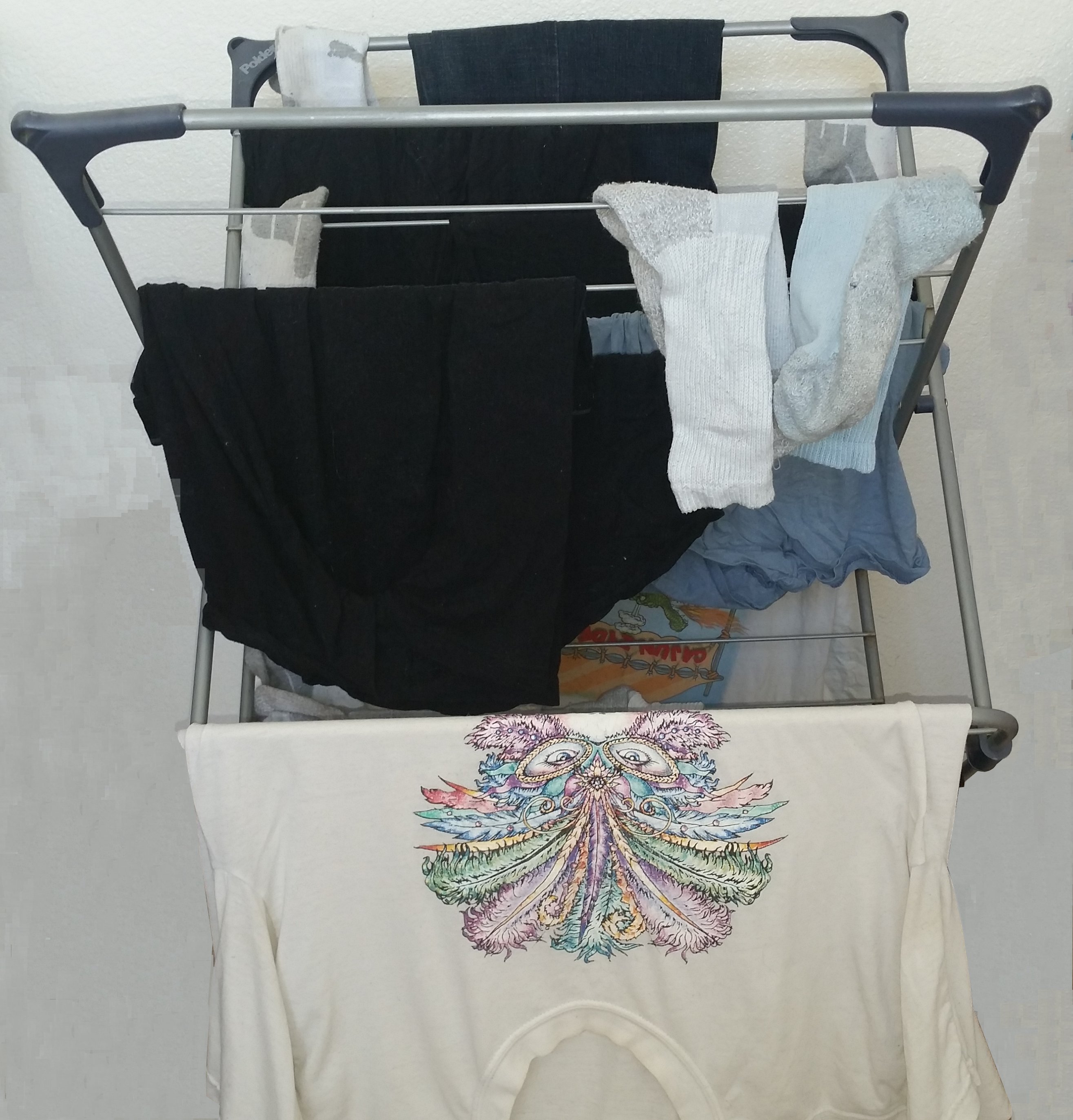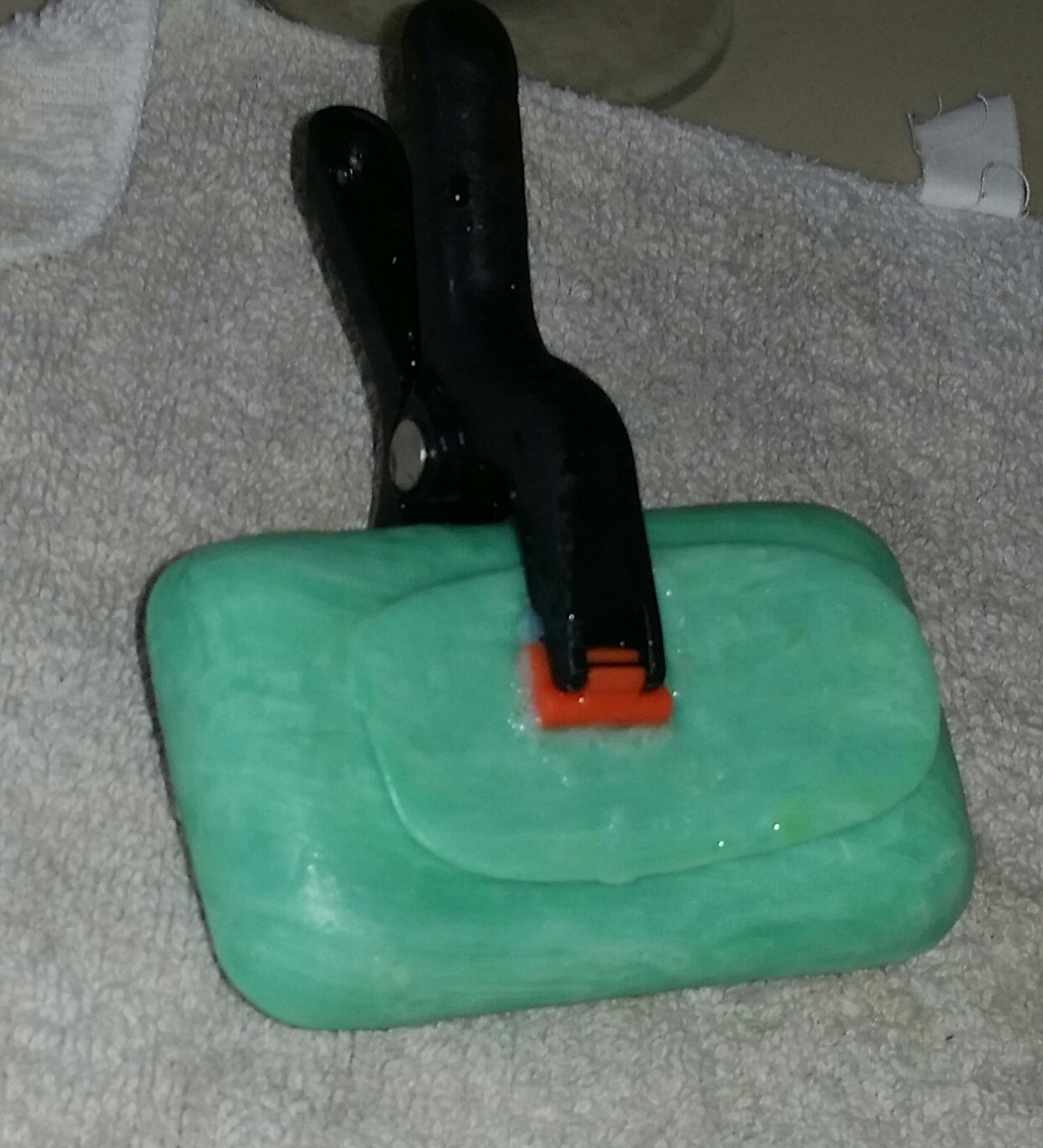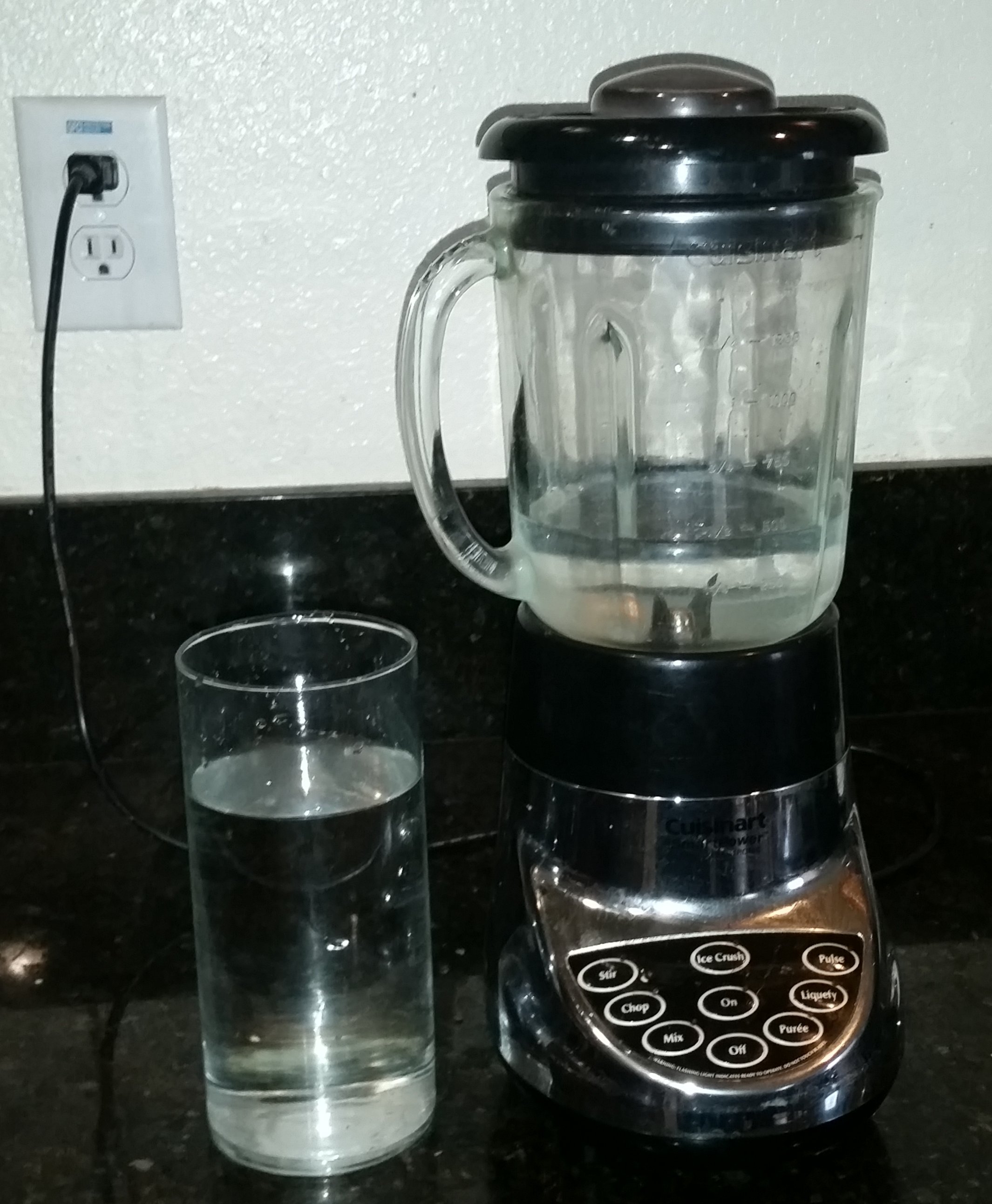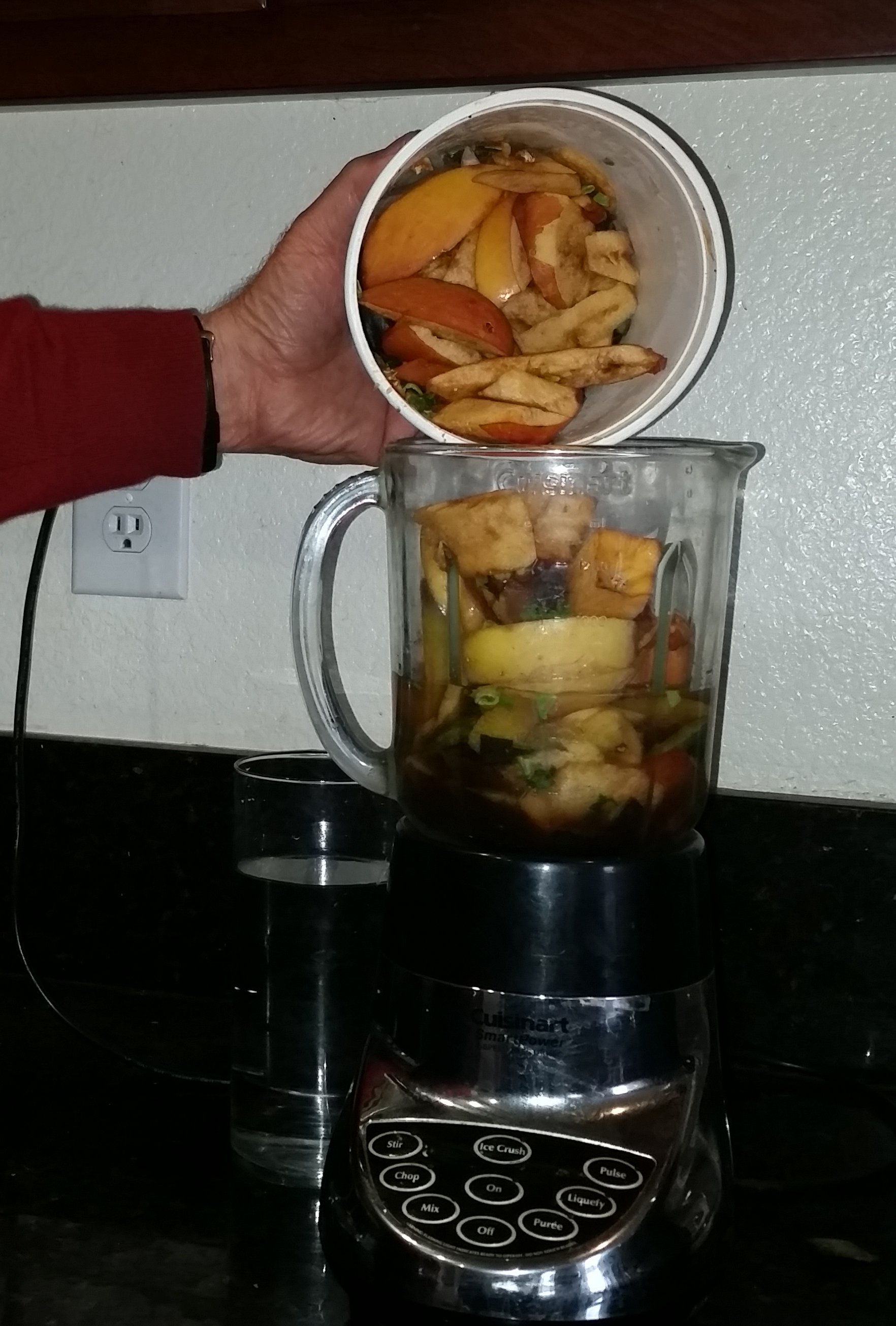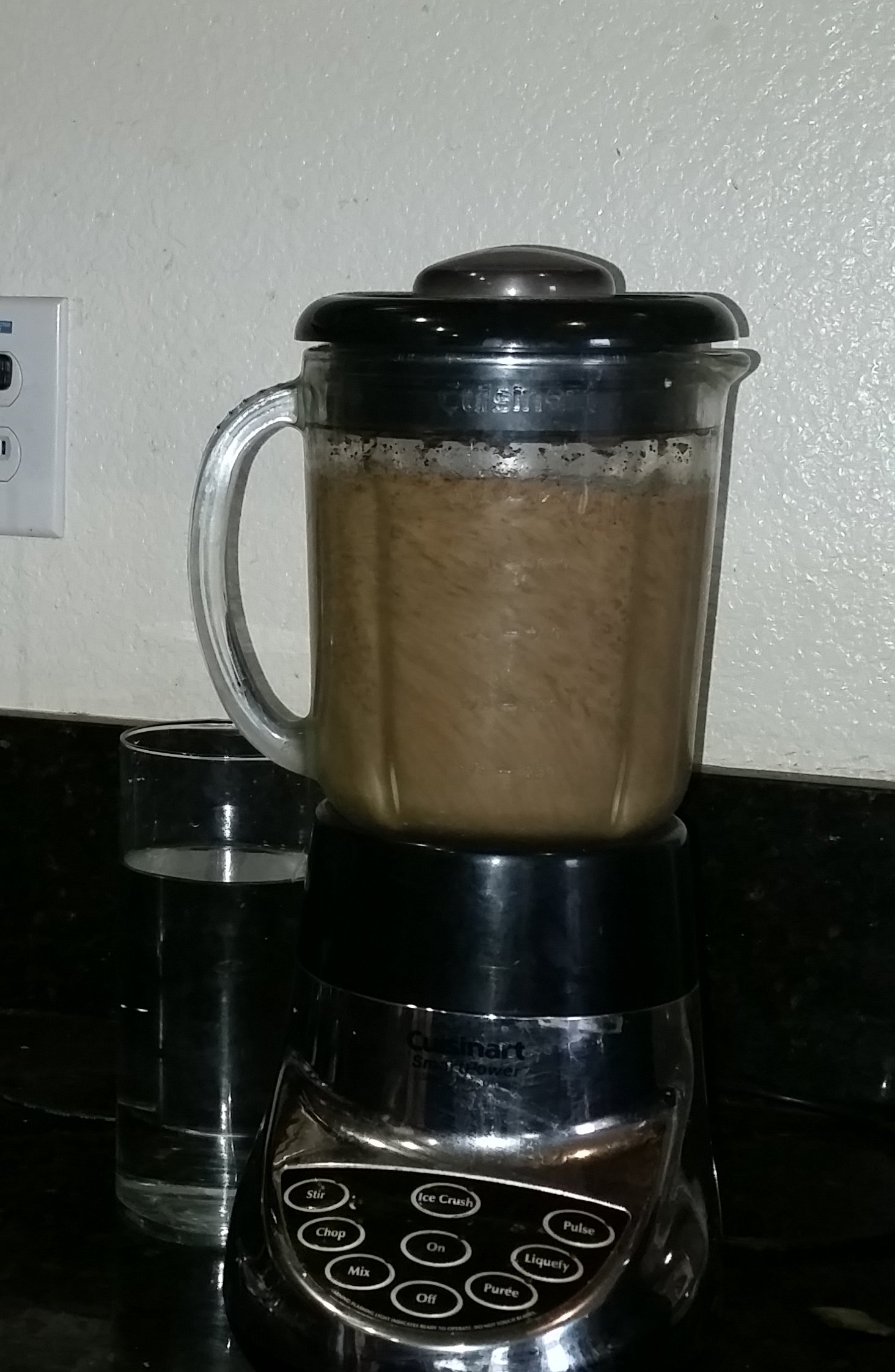WHAT CAN ONE PERSON DO?
Throughout this website we emphasize that Zero Waste must consist, at its root, of changes in the design of all goods so that they are designed for perpetual reuse.
It turns out, however, that there some products that are well enough designed so that they can already be used again and again, or for a very long time. Perhaps we can make use of repair and usage in such a way that those products never get discarded, broken, dismantled or recycled.
WELL MADE DOG LEASH
In the well-made department, I am very impressed with the design of a common dog leash (for those of you with dogs, pet pigs or etc.) This is the kind that has a spool of nylon cord which unrolls to let your dog roam far away and yet still be under leash control. The mechanism inside is rugged and lasts for decades, even if your dog is large. The part that wears out is the nylon cord and that can be shortened and reattached or replaced by another cord. The case easily comes apart with a few phillips head screws.
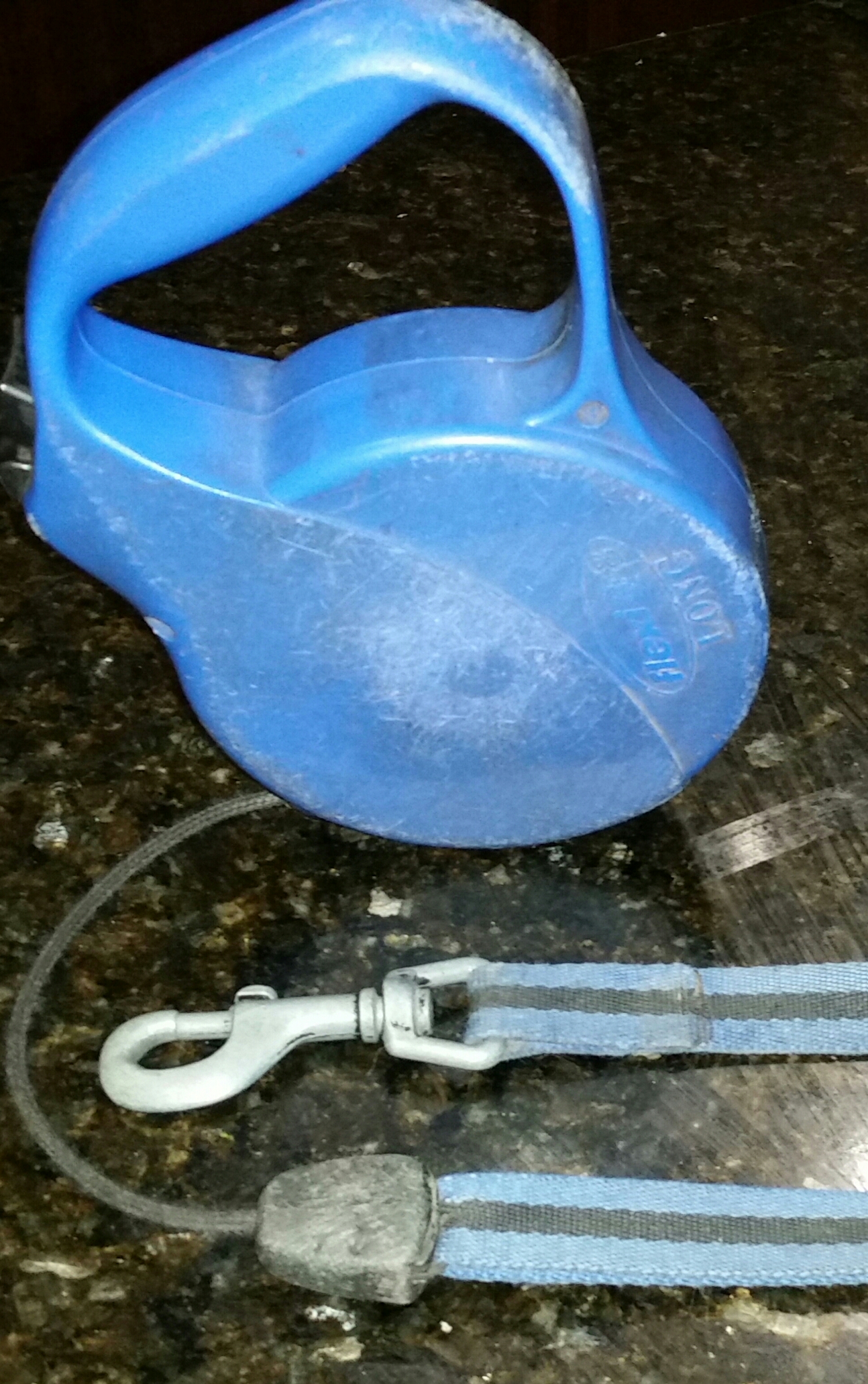 If only all goods could be designed this well.See the end of this page for a discussion of typewriters.
If only all goods could be designed this well.See the end of this page for a discussion of typewriters.
WELL MADE WASHING MACHINE
A more common machine that is well made is a top loading washing machine of the Whirlpool brand. One thing that makes this design especially useful is that it has been taken up by other manufacturers such as General Electric. The parts are mostly interchangeable across brands. If the agitator is seized by a heavy or cumbersome load, or by a user getting his arm caught and preventing the agitator from moving, there are four small plastic pieces (called “dogs”) inside the agitator which break to stop the agitator from moving. The agitator comes off with one accessible bolt and the dogs are easily replaced. They cost about $3 from the repair store.
Another common failure mode for this machine is the coupling between the motor and the agitator. This little piece is made to fail preferentially. A replacement costs about $2 at Repair Clinic. I keep a few of these spare parts near my washing machine.
REPAIR SUPPORT
Naturally repair is a major concern with a complicated machine and this is well taken care of for these machines. Repair Clinic has an online website where parts can be cheaply ordered. There are numerous videos on Youtube which teach you every aspect of making repairs. If you can find this, or any other easily repaired machine, you may have it for fifty years.
CLOTHES DRYER
While we are on the subject of clothes washing, how do you dry your clothes? The appliance industry has tried to sell us on the idea that we need instant drying, using an energy hog called a clothes dryer which usually sits next to the washing machine. News Flash! You don’t need it at all.
You probably are already familiar with drying your clothes outside, in the sun, on a clothesline. But when it’s raining, this is not an option. What to do?
You can have all the convenience of drying your clothes next to the washing machine but without using any heat. All you need to do is to buy an indoor, folding, clothes rack. Or you could make one out of wood and clothesline since it’s quite primitive. The idea is that clothes come out of the washing machine already spun dry, which is pretty dry. If you just hang them in the room air, they will dry by themselves. Even jeans, the slowest to dry, will be dry in two to three days. Light cotton will be dry in a few hours to overnight. Athletic socks in two days. I have done this for twenty years and never had a problem. The use of anti-wrinkling and anti-static chemicals is a completely unnecessary waste of additional chemicals that no one needs.
BAR SOAP REUSE
Another saving that I have had a lot of inquiries about is soap, including the small bars provided by hotels and never used up. I have found that when a bar is used up and small and thin, it can be fused to a new, larger bar so that the two become one. Irish Spring brand bar soap actually comes with a depression on one side that is perfect for fitting in the old bar. You can just suds up both bars and put them together to dry, if they are not going to be used for several days. I recently learned a new trick. Get a large clip such as the one used to seal bags of potato chips for example, and use the clip to hold the two pieces of soap together. This fuses them faster and more solidly than just leaving them in soft contact. A stacked mound of hotel bars could probably be fused into a large bar this way.
FOOD SCRAPS
Here is a tip that has a strong, daily impact on your behavior with the potential to totally eliminate the need to ever put out any garbage can. It depends on having a comprehensive recycling program for hard goods available. I have a single stream recycling can which I put out for taking up every week but I never make use of the can provided for garbage. Even though I don’t actually believe that single stream recycling has any real meaning for preventing discard, still this is about personal efforts, not about redesigning our whole society.
STINKY GARBAGE
The point of this behavior is to recognize that almost the only reason that anything takes on the features of standard “garbage” is that it is contaminated with organic matter, meaning primarily food. That’s why it is thought of as smelly and dirty. If every single scrap of excess food is intelligently handled, and no organic matter ever contaminates the recyclable goods, then essentially every excess can be sent out for recycling. There is nothing that smells, or coats a can with fetid slime, or attracts rats, flies, ants or other varmints. Instead of garbage being something that decomposes, ferments and stinks, your garbage becomes clean and odor free. You can store it for six months (by way of example) and it won’t matter much. If there is a garbage strike, you are unaffected. Around the world, when there are garbage collecting strikes, governments go crazy because of the odors and health problems. Not you. Not if there is no organic matter anywhere in your discards.
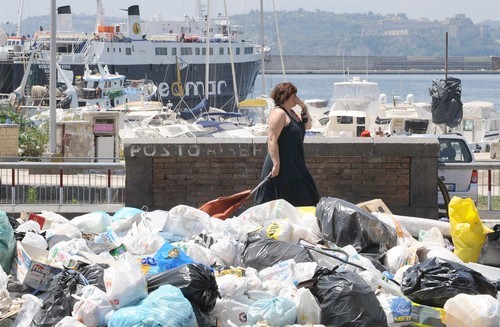 A Woman Holds Her Nose Near Stinky Garbage in Naples During A Garbage Workers’ Strike
A Woman Holds Her Nose Near Stinky Garbage in Naples During A Garbage Workers’ Strike
DISPOSABLE RAZORS
When shaving, it is so seductive to make use of those cute little disposable razors. They are cheap, they are always sharp on the first use and really, do they waste that much when you so cavalierly toss them into the garbage can?
As usual, it is not the piece in your hand which represents the wasting going on. The real waste is in the huge factory making these razors by the millions of tons and then all the distribution and marketing channels (see below).
So what makes them disposable? Probably the fact that by the second time you go to use one, it is no longer as sharp as it was last time. This can’t be an accident. Surely it is designed into the product to keep them moving into a waste can. How does it happen? Apparently the thin, sharp edge of the razor corrodes overnight when it gets wet and by the next day it is dull. Is there a way to prevent this? Yes, there is.
All you need to do is to keep the sharp edge of the razor sitting under oil to keep out air. Set up a little container with some motor oil or vegetable oil in the bottom and leave the razor sitting in it overnight. The next day, and the next day, it will be just as sharp as it was the first time. You may want to keep a little brush, like a retired tooth brush, to clean the hair out of the razor before dunking it into the oil.
RESPONSIBILITY THEORY
So how do you accomplish this miracle? Very easy, if you are just willing to step up to take personal responsibility for your choices. If you decided to buy or eat or peel a potato, orange or watermelon, then the fate of those peelings and rinds is YOUR responsibility. We are beset by third party garbage companies who are only too willing to charge you a small fortune to pretend to take responsibility from you. I say pretend, because no one can actually take on that responsibility. All that the garbage company will do is to apply an egregious IRRESPONSIBILITY towards your leavings. What they will do with your garbage is despicable and wasteful. But that is the normal city behavior, around the world. It’s time to change all that and the amazing thing is that you can do a great deal, all by yourself, to solve this problem.
ZERO WASTE THEORY
Time for a short aside into Zero Waste theory before continuing. Why is it that no one can take on your RESPONSIBILITY as well as you? The simple answer is that no one else knows all about the origins, history and usage of those discards. You do, because you generated it, from your own food. When you first get it, you know it is clean organic matter, not something mixed with dog poop or smallpox exudations. Only YOU know all about that organic matter, and you trust it for being what it is, just like only you know all about the other discards you generate. That knowledge is critical in designing a fate for anything you don’t need anymore. You know if something is quite usable for someone else so you can take it to a thrift shop or sell it online. If something is broken, you know exactly what failed. If we lived in a world with abundant and compulsory repair, you would be the agent to describe the failure to a repair person. Once the knowledge is lost, and someone has to guess, they will have to generalize and react in average ways, rather than targeted ways. Without specific knowledge it may be that the only subsequent thing they can do is some version of destruction. This is a failed concept of design of the reuse process.
FOOD SCRAP BLENDING
Okay, let’s return to the clean scraps that you have collected. Maybe you’re thinking that you need to be composting those food scraps. Not a bad idea, if you can manage it, but hardly anyone can. Composting is a demanding process, requiring some equipment and lots of time and attention. You can do it of course, but you will want to add in new material every day, which throws off the schedule. You need to maintain the pile at a minimum temperature which is not easy. You need a dedicated place like a backyard, which is a luxury for lots of folks. And the pile is a magnet for mice, rats etc. So the whole backyard composting project has basically collapsed from these internal contradictions.
What else can we do? Here is a better way to handle those scraps.
The trick is to remember that all organic matter rots. You can’t stop it. Bacteria, algae, fungi and worms are ubiquitous. How do you give them easy access to eat up your delicious scraps that they love? The way I am suggesting is to grind up the scraps into tiny pieces, mix them with water into a slurry and put it out onto soil anywhere. It is easy, it works great in practice and you don’t have to control the rotting process at all because it happens by itself.
What I use is a high speed blender, the kind they make for making smoothies or pureed vegetables. It should have a strong motor for this work. 500 watts or more is recommended. If you can, it is a good idea to sharpen the blades but it will work without that. Just save up your food scraps until you have about a container’s worth. Cut them with a sharp knife into small pieces. Put some water in the blender, add some scraps and homogenize the mix at high speed. Add some more of both, being careful not to go over the top. Puree again. You will quickly learn how to control the amounts. Too little water will prevent the contents from mixing properly.
When you have a full container of the slurry, fill a bottle with clean water to take with you. Then take the slurry and the water out to any patch of soil accessible to you. Throw the slurry onto the soil, then wash down the sides of the blender with the water and repeat. The tiny particles of food will be immediately attacked by every kind of microorganism and worm in the soil and by tomorrow, it will all be gone. Reusing the same soil within reason will give the critters time to multiply. Give the blender a final rinse in your sink, wash out the food scraps container and you are done.
Compared to composting this is so easy. No mixing big pieces in a rotating drum, no temperature control and no need to protect against mice or rats or hungry household pets. The slurry practically becomes dirt the moment it hits the ground.
One caution: a blender like this is not a universal grinder. It cannot work with really hard objects. Save your bones, olive pits, date pits, mango pits and peach pits in a separate container and treat them differently (but see below). There will be so few of them that you can hide them under a bush or a tree and they will simply decompose (or grow a new tree!). If you want, you may be able to smash them all with a hammer first so they rot away. Corn cobs and sheaves, like artichoke leaves, present a problem because the cobs are so hard and the fibers in the leaves so long that they will clog the machine. The solution, for now, is to cut anything soft enough, like corn cobs, into small parts and to cut leaves into short fibers, perhaps using a strong scissor. The day may come when a universal grinding appliance will take everything for size reduction. Designing and building that will be a new Zero Waste business.
If you are lucky enough to be able to get hold of an industrial, commercial or heavy duty blender with heavy duty cutting knives and a powerful motor, my friend Kingpin Joel in Washington DC has shown me that you can even blend up various pits of fruits such as avocado and mango. If you search Youtube with the term “Will It Blend” you can find silly demonstrations of destroying smartphones and magnets and more in a blender.
REUSING CONTAINERS
The next important thing you need to do is to eliminate as much packaging as possible. You need packaging for carrying things home but you don’t need to add to your packaging load. Just by using a little intelligence, you never need to take a plastic or paper bag from any merchant ever again. You can buy a lot of bulk items but not everything. Many of the items you need will come in a plastic bag or a bottle or a can. Try to avoid the cans, especially any that have mixed metals such as steel sides joined to an aluminum pull top. These should be banned because they cannot be resmelted into a pure metal – neither iron nor aluminum. They are intended to fill up a dump and not be smelted. Many soups are using them. Also, try to make use of wide mouth jars as much as possible.
When you are forced to bring home packaging, let’s find a way to make use of as much of it as possible. If you have a large collection of jars, you can buy food in bulk, then transfer it to a labeled jar in your home. Make nice labels on your computer printer and you will never have to taste a white powder to see if it tastes like sugar, salt, gelatin, citric acid, tapioca, bicarbonate or flour. Some jars have labels that can be peeled off easily. Others need to be soaked off. Wet a rag and lay it on the label for an hour to soften the glue. Even if a label peels easily when dry, it may leave the jar clean or covered with adhesive. If the latter, it may help to heat the adhesive before peeling. Hold the label gingerly over a burner on the stove enough to heat it and the adhesive may decide to come off with the label. If not, keep some paint thinner around and use it on rag to dissolve off the adhesive. This also works for residual glue on a water soluble label. Paint thinner has the property that it is a very poor solvent for plastics and so it won’t dissolve your jar or your counter or your shoes.
CARRY BAGS
As for those plastic bags you are forced to bring home around your peanuts, potato chips or snack foods, don’t throw those away. Wash them gently with some soap and water and put them where they can stay propped open and drying. They are usually quite strong, stronger than the light plastic bags at the checkout line, and since, in this wasteful world, you are constantly forced to carry some home, you will have a never ending supply. Stash them in your cloth shopping bag and make sure to grab it all every time you leave your vehicle. You should never have to take a single lightweight bag for your groceries at the checkout counter. These heavyweight bags don’t blow around. This is how the plastic bag crisis should be handled, not by a ban. Everything reused.
Supermarkets that I know go out of their way to force a pile of light plastic bags on customers. This is worse than wrong – it is harmful. If you really want to have an impact, get your supermarket to stop making plastic bags easily available. Instead, they should have signs explaining why taking excess plastic bags is a bad idea. If they have to make these bags available, get them to do as much as possible to reduce the number to the absolute minimum, instead of the maximum as they are doing today. Customers should have to request a certain number of bags rather than having them available for the taking, in huge, excessive quantities. Any receptacle nominally for recycling plastic bags should be eliminated as mendacious. REUSE, DON’T RECYCLE! Get that message out to customers who throw perfectly fine, once used bags, into a recycling drum and tell themselves they are doing something worthwhile. WHY DON’T THEY SIMPLY REUSE THEIR BAGS?
See some more discussion of packaging by clicking here
REPAIR
Despite the theory of planned obsolescence that is the official mantra of manufacturing, many appliances are quite repairable. Youtube has many videos for special and detailed repair jobs, even for computers and televisions. Many appliances are still made to come apart easily with screws. If you can, have more than one of the same exact model. This is especially affordable when buying from thrift shops. Then one unit can supply spare parts for the second unit.
If you want to purchase replacement parts for anything you own, the internet has had a major impact on that. One website is www.ereplacementparts.com. Another is www.repairclinic.com. I’m sure there are more to be discovered.
CLEANING
This page is about eliminating waste and discard. Some other personal recommendations you may read jump right into telling you that you can eliminate all cleaning products and just use sodium bicarbonate and vinegar. You won’t hear that here. Those recommendations are oversimplified claims that all that is needed to do cleaning is the use of (1) alkalinity and (2) acid. Sodium bicarbonate is a very mild (!) alkalai with a pH in water of about 9. Vinegar is a very mild (!) acetic acid with a pH of about 5. These pH levels can hardly do anything to the dirt you are trying to remove. All of the grandiose claims for them are overblown, though vigorous scrubbing can make them appear to do wonders. Stronger acids and bases would do more, such as if you used washing soda (sodium carbonate, pH about 11) or muriatic acid (hydrochloric acid, pH about 1 or 2) but the dangers of these strong actors is why more gentle, more scientific products were designed in the first place. Some alkalinity does indeed disturb oil and dirt, and is always included in cleaning compounds, but not by itself. The magical discovery for cleaning was called surfactants. These are compounds whose molecules have one very organic end (lots of CH2 groups for example) and one charged end (sodium sulfonate for example). Because these two ends are on a single molecule, they dissolve oils with the organic end and connect it to water with the charged end. The result is that oils, which mostly bind dirt particles to clothing and surfaces, are pulled into an emulsion with water and removed. This gentle action is extremely effective, which is why all of your cleaning compounds, for every purpose in your house, consist largely of this kind of chemical compound. That includes your hand soap and shampoo too. Mild acids and alkalais cannot do any of this.
Any other way of producing an emulsion also does cleaning. Using quite hot water and vigorous agitation are two ways to remove oils and dirt without chemicals. Also, the amount of surfactant needed is very little since it is very effective. Use hot water first, and a tiny bit of surfactant afterward, if really needed.
SHAMPOO
On the subject of shampoo, you can reduce your usage with some smart purchasing. When shampoo is being made, there is one number which is critical. When shampoo is sold, this number is kept a secret from the user – from you! It is never reported on any label. I can guarantee that the formulator of your shampoo knew this number down to the last decimal point because his raw material costs depend on it. This one number tells you whether the shampoo is effective or just diluted with water. So of course they don’t want you to know it. This number is called “percent active”. It tells you what percent of the shampoo consists of the active ingredients that do the work. You can find those on the label under hundreds of names, such as sodium lauryl sulfate, sodium acid sulfonate, nonyl phenol ethoxylate and a hundred other names, but they are all surfactants and all work in similar ways. If your shampoo has a lot of them, you can use just a dab to wash with. If your shampoo is light in them, heavy in useless additives and water, you will need a big handful of shampoo to do the job. In the latter case, you will use up the bottle quickly and be back to buy another one, which is of course the reason the label prominently advertises vitamins and amino acids etc. which do nothing except confuse (and attract) buyers.
Without that number, you have to estimate by the amount of shampoo it takes to wash with. What I have found, perhaps surprisingly, is that it is the cheaper shampoos which apparently have the highest percent active. Perhaps this is because surfactants are cheaper than perfume, vitamins, amino acids, exotic additives and advertising. This brings us to the core question of reducing discards. If you can find bulk shampoo, fill your bottles with it. If not, try some samples and then buy the largest bottle of effective shampoo you can find. Some organic groceries sell bulk cleaners. In Costa Rica, I found large, bulk dispensers of cleaners and I am told these exist in other advanced countries where enforced wasting is not enshrined as it is in the US.
This same discussion applies to dishwashing liquids and clothes washing detergent. (Tip: detergent is another word for surfactant).
A friend of Zero Waste Institute, Ergun in Los Angeles, urges us to use up all of our shampoo, rather than discarding the bottle when it first appears to be empty because “no more comes out”. No! At that point, there is probably ten more washes you can get out of it. How? Put some water in the bottle, shake it up, and dilute the remaining shampoo so that it runs easily out of the bottle. But be aware. Surfactants have a strange property. A little more water can make them thicker, not thinner. So add enough water to thin them for further use.
FLOWING RESOURCES
If you read the contributions of many home educated Zero Waste advocates, you may get the impression that Zero Waste only applies to things you put in your garbage can. They may hold up a small bag of “garbage” (whatever that means) and tell you that this is all the waste they generated in a year so they have achieved Zero Waste. This is nonsense. We all use up resources all day long that never show up in a package or cry out for discard. We cannot walk on the earth without leaving a footprint. We are going to deplete the earth of some of its resources to some degree. The trick is to try for two effects: first, use renewable resources whenever possible and second, use as little as possible. We can hope for zero wasting but not zero usage. Even usage rates are constantly changing as we use resources more effectively. When solar energy runs our heating, rather than burning petroleum, that is a major improvement, but keep in mind that none of us can do this alone. We do not sponsor the kinds of research that make it possible to build more efficient solar panels. Governments primarily make this possible, through investment, grants, and policy support, while private companies do some of the research. No amount of our personal efforts will accomplish this. We can buy solar panels for our own homes but only after many years of policies have brought them into existence. No amount of recycling will create products that are designed for long lives and reuse. In fact, in an application of what is called Jevons’ Paradox, if we partially solve a problem, we may remove the incentive to really solve it and may therefore make it worse. The classical example is increasing gasoline usage by making cars more efficient, thus increasing miles driven. This is why the Zero Waste Institute urges fundamental policy changes for system redesign, not personal efforts to reduce waste by a small fraction.
WATER
New houses, and most hotels, use shower controls which are simply astounding. Even in a drought situation, where you might think water conservation would be paramount, the controls on showers that are universally used require that you turn them all the way over away from the off position to get hot water. There is no such thing as a little bit of hot or cold. No, you can only turn the volume to FULL FORCE ALL THE TIME! What were they thinking!!!
(Apologies to more progressive communities that use adjustable taps)
There could be, and is, a simple fix. All that is needed is a simple valve, like a ball valve, to be placed between the delivery pipe and the shower head itself, to control the volume independently. The pipe threads are usually simple half-inch so it would be child’s play to insert the valve.
A few years ago, I searched hardware stores and the internet for such a valve and found it impossible to find one. They did not exist. Yes, you can find a plumber’s brass valve but that looks clumsy and out of place behind a shower head. What is needed is a small, chrome plated valve to match the rest of the decor. No such thing anywhere. Now have begun to be sold at hardware stores. Here is another Zero Waste business. Go into the business of installing pretty but effective valves behind shower heads. They can usually be set once, to a conservative stream of water, and then forgotten while they continue to save water on every shower. A couple of years ago, an idea began to make the rounds of environmental recommendations. People were saying that you could save a lot of water by turning off the faucet while you brush your teeth. Let’s look at this critically.
How much water runs out unnecessarily while you brush your teeth? Yes, you could run water at maximum volume, but why would anyone do that? No, you probably do, or could, just turn on a gentle stream. How long does it take to brush your teeth? Two or three minutes? How much water is wasted in that time (if indeed it isn’t needed and is therefore “wasted”)? I would guess it is less than a gallon of water. How does this compare to other wasted uses of water?
New houses, and many old ones, come with sod lawns that have to be extensively watered. Grass is reputed to use more water than vegetables and bushes while giving little back. If you love your grass, if you absolutely must have your lawn, I can’t tell you that you’re wrong. I may believe it, but I can’t enforce it unless there is a water crisis. Therefore your lawn becomes a necessity for you and the water you use for it is likewise a necessity. But as a policy matter, thinking about the millions of acres in a city, and how it could be reduced, the amount of water used seems to be squandered. How about at your house? Do you have a patch of lawn? Do you think that if you saved a gallon of water while brushing your teeth, and used it on your grass instead, it would go far? Not likely! The answer is in the numbers. No measurement of anything is large or small except insofar as it it compared to something else. In this case, by most standards of conservation, a gallon of water per day is not significant.
If the lawn example doesn’t grab you, think about the amount of water used in toilet flushing, compared to one gallon.
SPAGHETTI
By its very nature, this discussion is a grab bag of things we do personally. So let me jump to the way that spaghetti is typically made.
I have a problem with the amount of water that is boiled for a small amount of spaghetti. I have seen entire large pots of water boiling away and I suspect this is common.
You may think I am objecting to the water itself, which would be very wrong. As we established above, a gallon of water more or less, on a sporadic basis, is not significant. Unlike a toilet, that may waste a few gallons with every flush, day in and day out, the amount of water cooking your spaghetti doesn’t affect anything. What does leave an environmental footprint however is the immense amount of fuel that is burned to heat that much water.
Chemically speaking, water is a unique material in many ways. The property of interest here is the amount of heat it takes to bring it to a boil from room temperature. A LOT OF HEAT!! And that heat normally requires a lot of fuel to be burned. Fine, if it’s necessary. But it isn’t necessary.
The reason for using lots of water, I believe, is to prevent the spaghetti (or macaroni) pieces from sticking together. How does this happen?
Spaghetti is typically a wheat flour based product. The wheat contains a lot of starch. When starch hits boiling water, it tends to form a sticky adhesive. If two pieces of spaghetti are touching each other, the starch that leaches out of the pasta stays in the space between them and binds them together. If they are not quickly separated, the starch forms a hard glue and the spaghetti clumps into big pieces which essentially ruins it. Cooking in a vast excess of water is one way to keep the pieces separated.
But, there is another way to keep the pieces of pasta separated even IN JUST A CUPFUL OF BOILING WATER. Just use a fork to stir the pasta while it is cooking and keep it moving. Don’t allow the pieces to remain in contact long enough to bind together. No clumping, no ruined spaghetti, no waste of fuel. Since the spaghetti absorbs a bit of the water while it cooks, use just enough excess water to allow for that absorption.
ZERO WASTE REALITY
I pointed out above that there are critical Zero Waste efforts that never involve any discard and therefore cannot be dealt with by reducing any garbage. Those were incoming consumed flows like water, electricity or natural gas. When I was a kid in the Bronx, I clearly remember coal trucks bringing coal for the furnaces. Later, another truck brought heating oil for our furnace. Actually, clean air is an important flowing resource which has achieved the highest criticality because of its effect on climate change.
However, there are still more Zero Waste issues that are universally overlooked, to the detriment of any and all attempts to reduce a personal footprint. These are those expenditures of resources which you never see but are nevertheless expended on your behalf and for your benefit, comfort and convenience. You use all of the infrastructure and more of your society. As you read this, you are using up the inherent value of the building you are in. It is getting older and very slightly more decrepit. That is for your benefit so you have responsibility for it. When you leave your building, you will use roads, streets, bridges and tunnels. Since they are there partly for your benefit, they are a part of your footprint. Since you use only a tiny part of their value, you try to ignore them, but a tiny fraction of a gigantic number is still significant. Do you drive a car? Take a bus or a train? Do you ever fly in an airplane? If not, do you order goods online that are delivered by air? Let’s look again at food. Do you imagine that potato peels are the only wasted input from the potato you had for dinner? Not even close. That potato came from a giant farm that used tractors, laborers, chemicals, energy, water and clean air as well as buildings and roads. A piece of all that attaches to your potato and it is a lot more significant in using up the planet than your mere peelings. Ditto for your computer, your furniture, your clothing, your phone, your DVD’s, your carpeting, your kitchen utensils and everything else that you use. Creating all of that doesn’t depend very much on you but your tiny fraction of that huge depredation of the earth is very measurable indeed. Here we begin to see one more flowing input. The information that is delivered to you has to come from somewhere. Think of the Netflix movie you are streaming. Making that movie, assembling those bits and bytes took lots of people and buildings and installations etc. They are not free. They are themselves low entropy (highly organized) and to make that low entropy creation required a larger increase in entropy (disorganization) somewhere to balance it. Watching that movie gives you responsibility for a studio and film makers and actors somewhere, even if you never see them.
This is why the juvenile attempts by cities around the world to achieve Zero Waste by low level, hopelessly failed recycling programs is simply ridiculous. They leave out 95% of the equation and thump their chests over the 5% that is left. San Francisco, Toronto, Tokyo – they are just wasting their time and deceiving their citizens. The man in the movie No Impact Man, even though it received acclaim, was working with 5% of his impact, reducing that to 3% and pretending that he had made a dent in 100% of his impact. Protecting the resource despoliation of the planet is not a job for novices and deceivers. It is a big job, requiring deep analysis.
Still, people want to feel that they are making a difference in the parts that are under their own control, and this is admirable, even if it functions mainly to educate and inspire such workers. Go to it, use some of the tips in this blog and send me more. Let’s all do our best and then we can combine together to create a society that deals with the bigger issues.
OTHER SOURCES
While I’m not usually a fan of others making claims of Zero Waste anything, this website is surprisingly good: Responsible Living.
I like their first entry for Buy Me Once goods that last a lifetime. As always, if well designed goods are obtainable, let’s make use of them.
The list of ways to save resources – water, air, fuel, metals, food, wood, animals and humans – could go on forever since the number of kinds of resources is legion and the ways in which we make use of each one is multivarious. Instead of building a long recital of separate methods, it is more my intent to build an attitude that will allow the reader to realize the ability she has to improve her conservation of all resources that cross her table. Don’t accept the backward notions that fly at you that convenience is a holy creed culminating in throwing away and sweeping clean. Don’t accept the retrograde notion that your minor little needs overpower any and all impulse to conserve our planet. Reject wholesale the idea that protecting some company’s profit is the be all and end all of consumption. This will place you squarely in conflict with the reigning assumptions of our society. Congratulations! From a planetary viewpoint, those assumptions tend to be abysmally stupid and selfish. You don’t exist in order to help anyone make a profit. Reject common sense when it runs up against common intelligence. In all things, embrace a role as a maverick, but especially when you are urged to waste, destroy and discard. Remember, recycling is closer to enforced wasting than to clever conserving. Don’t be taken in by it unless nothing can be done to avoid it.
In these pages we take pains to make clear that our personal efforts are rewarding and feelgood but leave the big, social design decisions unchanged. Here is what Derrick Jensen has to say on that topic. He begins with this paragraph:
Would any sane person think dumpster diving would have stopped Hitler, or that composting would have ended slavery or brought about the eight-hour workday, or that chopping wood and carrying water would have gotten people out of Tsarist prisons, or that dancing naked around a fire would have helped put in place the Voting Rights Act of 1957 or the Civil Rights Act of 1964? Then why now, with all the world at stake, do so many people retreat into these entirely personal “solutions?”
Similarly, Lierre Keith in The Vegetarian Myth (p. 264) has this to say:
“If you hear nothing else in this book, hear this: there is no personal solution.”
The Green Party which has saved this writing, really gets it. Also see my own article Why E-Waste is Deceptive on their website.
The clash between your small, personal choices and the large, systemwide choices that could really make a major, social and industrial difference, is encountered over and over with social choices. For example, what about population control? Many of us realize that there simply too many humans in the world, and we cannot survive if total population continues to rise to ten billion, fifteen billion and onwards. But what about our personal family? Those babies are so cute! And a large family is such a comfort. If we are poor and need many children to support us in old age, we need to have five or ten kids. Yes, we could limit our offspring to none or at most two. But we’ve been trying that for years and the total just keeps rising. The only way to make a difference involves huge, whole population based interventions. Our personal choices are not going to solve the problem or preserve our planet.
TYPEWRITERS – In her book Red Hangover, Kirsten Ghodsee reports her romance with old, well-made German typewriters (p. 88).
|
Typewriters have history because there is no planned obsolescence. As long as you don’t drop them, and keep them well cleaned, they can work forever. In Germany, … typewriters and guns actually share a common origin. Indeed, if Germany had won more of the wars it started, my Olympia and Rhinemetall typewriters might never had existed. … Typewriters never crash, never need software updates, and don’t become obsolete every four years … When something goes wrong with my typewriter, a screwdriver and some machine oil are normally all I need for the repair.
|

